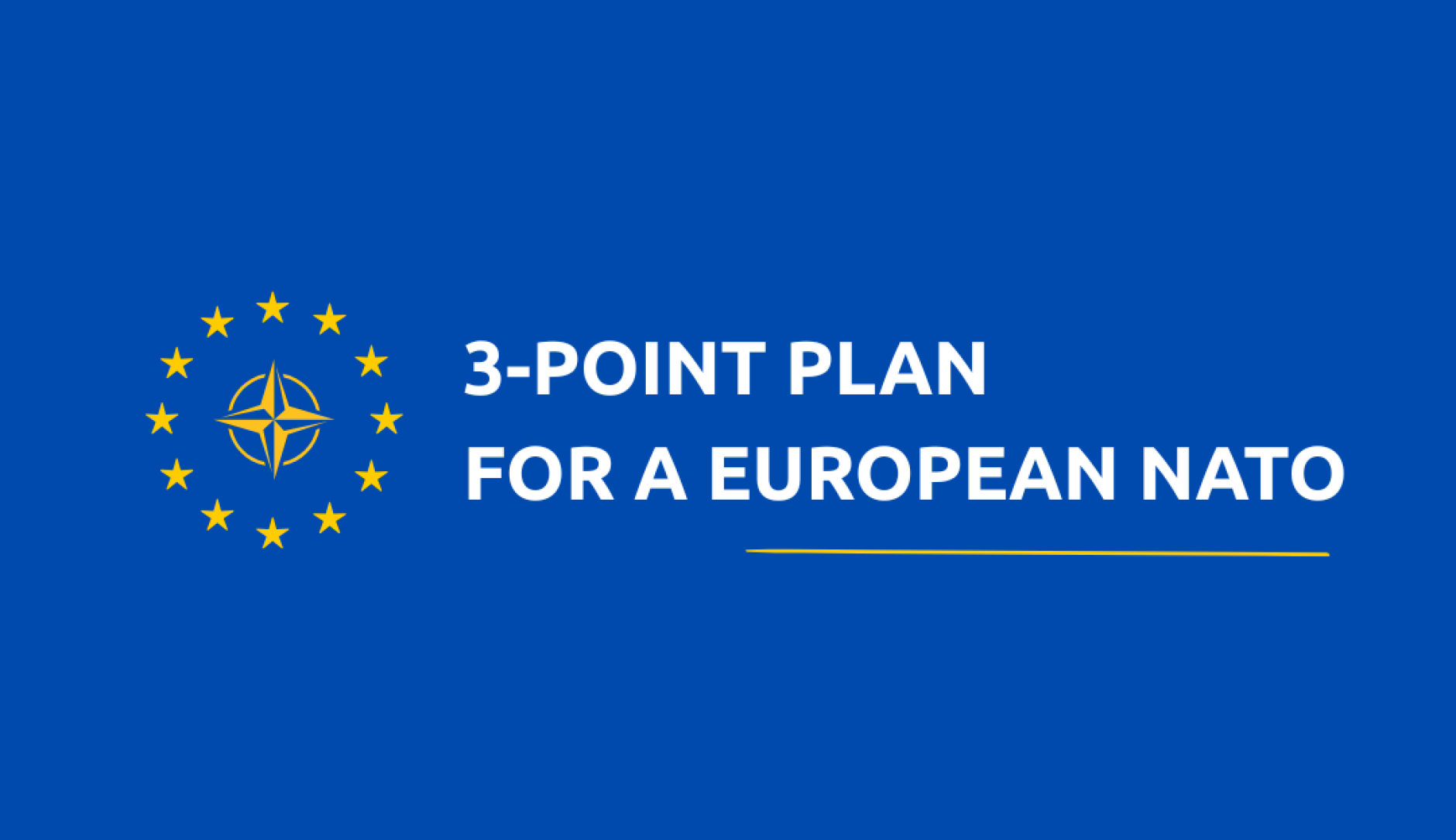3-point plan for a European NATO
Almost all NATO countries still cling to the United States: it must protect us, and we just need to raise our defence spending to meet the NATO benchmark. Calls for an independent Europe are dismissed as naive. But the only naive idea is the illusion that we can still rely on America.

That’s why Volt presents its own plan. A plan that dares to do what traditional parties won’t: build a European NATO in which America is not a ‘need to have’ but a ‘nice to have’ – because we are in control, we have our own army, and instead of fixating on a nationalist NATO norm, we procure our weapons as one Europe.
1. No American Commanders, but Europeans
NATO is a large organisation of officers and civil servants. Key positions are currently held by Americans, giving the U.S. effective control and rendering NATO non-functional without them – particularly if the U.S. chooses to withdraw or refuses to participate in a (defensive) mission. Therefore:
A European Supreme Allied Commander
Appoint a European as NATO’s Supreme Allied Commander Europe (SACEUR), a role historically always filled by an American. In the short term, the commander should have sufficient authority and independent capacity to make tough decisions autonomously – think of a French or British officer;
Europeans in Key Positions
Promote Europeans into key NATO roles – such as the SACEUR’s staff, personnel operating joint systems like AWACS, and commanders of various operational NATO units in Europe;
Ukraine as a NATO Member
Ukraine’s future lies with Europe and NATO. It needs security guarantees to prevent further Russian aggression. NATO membership, with Article 5, offers the best protection. Ukraine also strengthens the alliance through its battlefield experience, innovative defence industry, robust military, and resilient society;
An EU Ambassador to NATO
Appoint an EU Ambassador to NATO (a "permanent representative" like those to the UN and WHO) so that the EU has a larger and unified voice at the table.
2. A European Army That Takes Over US Tasks in NATO
If Russia were to attack Europe tomorrow, the American SACEUR would call the U.S. President. If the President refuses to respond, NATO does not respond. Why? Because without the U.S. military, NATO is powerless. This is partly due to the troops and equipment the U.S. provides, and partly because NATO depends on American capabilities like nuclear weapons and air defence. Therefore:
A European Army
With 27 small national armies, Europe cannot operate independently of the U.S. The time has come for a single European army with a unified command structure. To replace the current U.S. presence in Europe within the next five years, at least 50 new European brigades need to be created – 250,000 European troops – training regularly. A European military academy and an upgraded military headquarters are also essential;
European Intelligence Agency
European forces are currently entirely dependent on American intelligence – on enemy troop locations and movements, for example, or to make informed strategic decisions. The intelligence services of individual European countries are too small to rival agencies like the CIA. The EU should establish a European intelligence agency, at least initially among trusted member states, that can jointly purchase costly systems like surveillance satellites and radar aircraft;
European Nuclear Deterrent
Without the U.S. nuclear umbrella, Europe is vulnerable. French nuclear weapons must be used to protect all of Europe and should eventually fall under a democratic and credible fully Europeanised command. UK nuclear weapons could further strengthen this deterrent;
European Strategic Enablers
Europe must acquire all the capabilities it currently relies on the U.S. for – not just intelligence and nuclear deterrence, but also air defence, drones, long-range missiles, satellites, cyber capabilities, aircraft carriers, and transport aircraft. A European DARPA would help ensure we also develop future capabilities using cutting-edge defence technologies that stimulate innovation – such as AI and quantum computing.
3. Not Just Spending More, But Spending Better: Spend It European
Ahead of the NATO summit, everyone is talking about the NATO spending benchmark. But fixating on this norm keeps us trapped in the old transatlantic world order – one that no longer exists. The focus should be on how we spend our money. At present, Europe wastes €103 billion annually due to the lack of integration in defence – a third of all European defence spending is thrown away every year. Therefore:
Spend All Money Above the 2% Benchmark at EU Level
Allow the European Commission to procure military equipment on behalf of member states and develop, own, and staff strategic enablers – rather than trying to do so per member state;
Build a European Defence Industry
While many markets are already integrated at the EU level, the defence industry remains national. The EU should invest in building a European defence industry by purchasing European-made equipment instead of American or national alternatives;
Standardize Weapons and Equipment
It’s time for one European rifle, one European tank, one European fighter jet, one European uniform, etc. This enables better cooperation among troops and leads to major cost savings;
Use Eurobonds
Eurobonds offer the best value for money and reinforce the Euro’s role as a global currency.
______________
You and us share the same dream of a united, thriving Europe. It really means a lot to us when you make adonation, and if you would like to help us plan ahead with confidence, we thank you for yourmonthly contribution 💜